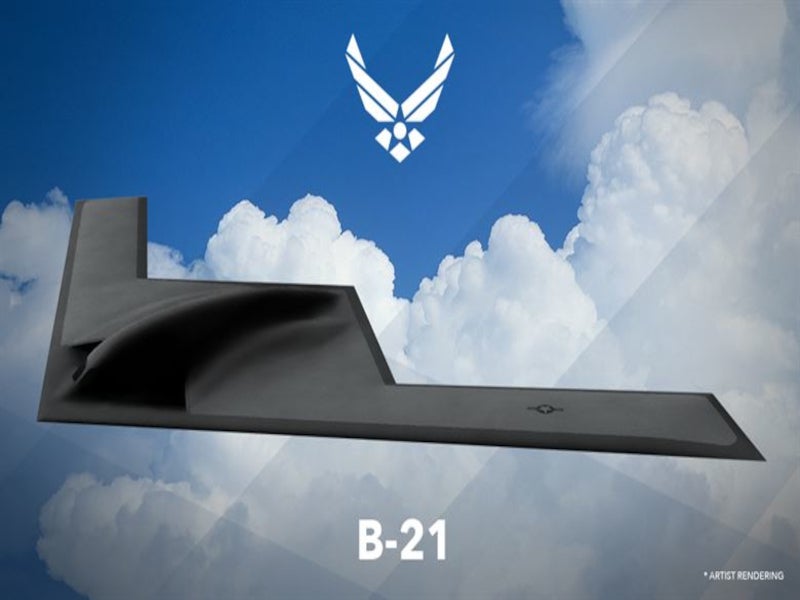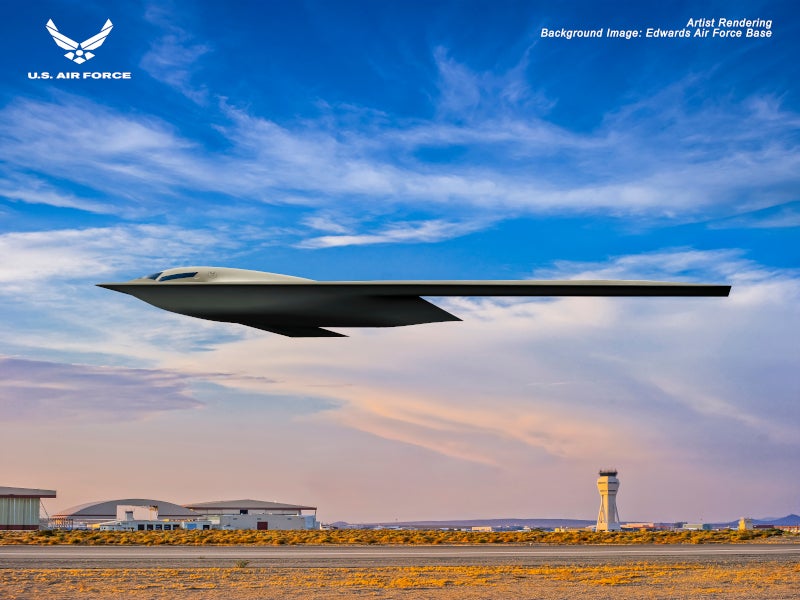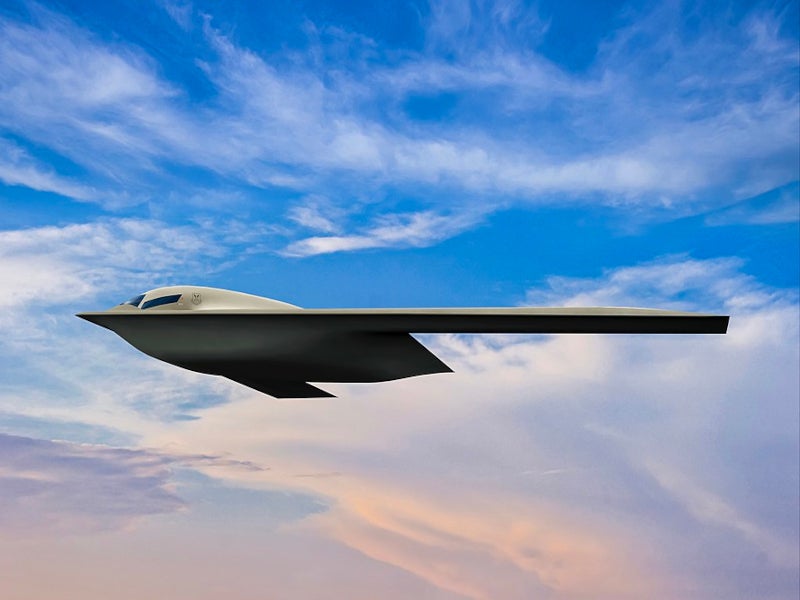The B-21 Raider is a next-generation highly survivable, penetrating strike stealth bomber being developed by Northrop Grumman for the US Air Force (USAF). It will serve as the backbone of the future bomber fleet of the USAF and will be a key component of the nation’s three-pronged nuclear triad to support its deterrence policy.
The nuclear-capable bomber is named B-21 Raider in honour of the Doolittle Raiders, the US Army Air Force men who launched 16 B-25s off the flight deck of the USS Hornet in a surprise attack that led Japan to withdraw combat forces for home defence during World War II in April 1942. The B-21 designation also signifies the aircraft as the 21st century’s first bomber.
The aircraft is being built at Northrop Grumman’s manufacturing facilities at Air Force Plant 42 in Palmdale, California. The first six aircraft were in different stages of production and testing as of May 2022.
The first loads calibration test of the B-21 aircraft was completed in May 2022, as part of ground testing. The testing involved calibration of the aircraft’s instrumentation and verification of structural integrity ahead of the planned first flight in 2023.
The Dyess Air Force Base (AFB), Texas, Ellsworth AFB, South Dakota, and Whiteman AFB, Missouri were named the preferred main operating bases for the B-21 fleet.
The Ellsworth AFB was officially selected as the first main operating base of the B-21 aircraft.
Development contract and budget support
Northrop Grumman was selected over the Boeing-Lockheed Martin team in the competition for a new long-range strike bomber (LRS-B) for the USAF.
Northrop Grumman received the contract for the engineering and manufacturing development phase of the new LRS-B in October 2015.
Being developed under the LRS-B programme, the next-generation B-21 aircraft are expected to eventually replace the USAF’s ageing fleet of B-1 Lancer and B-2 Spirit bombers, and potentially B-52 bombers. The USAF plans to procure a minimum of 100 B-21 Raider bombers.
The funding for the B-21 Raider development programme in the FY2021 defence appropriations bill was estimated at $2.84bn. The budget request for further development and initial production of the B-21 Raider in the FY2022 budget was $2.98bn.
The USAF intends to spend $5.2bn for the further development of the B-21 in FY2023.
B-21 Raider design and features
The B-21 Raider features a flying-wing structure. Its design includes a large and flexible payload bay that is expected to carry existing and future weapons.
The design features an open systems architecture, which will allow for easy integration of new sensors or other subsystems from various suppliers. The architecture will enable easy upgrades to the aircraft with advanced technologies to meet the challenges posed by evolving threats.
The B-21 Raider will be a vital part of a larger family of conventional long-range strike systems and complementary systems, including electronic attack, intelligence, surveillance and reconnaissance (ISR), communication and other capabilities. It will be able to operate in future anti-access, area-denial environments.
The long range and large payload are strongly indicative of B-21 being subsonic. The bomber is also expected to provide the flexibility to launch both conventional and nuclear munitions.
It will be able to provide penetrating and surviving capabilities in advanced air defence environments. It will support manned as well as unmanned operations.
It will be armed with conventional weapons, the long-range standoff (LRSO) missile, and B61-12 gravity bombs.
Stealth capabilities
The B-21 will feature next-generation radar-absorbent materials, providing stealth capabilities to the aircraft.
Its high processing power will allow it to quickly process information from onboard sensors and external sources to detect threats.
It will have minimum aircraft signatures for a lower probability of interception in multiple frequency bands. The advanced capabilities are expected to allow the B-21 bombers to penetrate current and future adverse defences.
Software
Kubernetes, an open-source system to automate deployment, scaling and management of containerised applications, is being used for the B-21 programme.
The USAF’s B-21 team ran containerised software with Kubernetes on flight-ready hardware in 2020.
Contractors involved
Major subcontractors involved in the B-21 programme are Pratt & Whitney, a subsidiary of Raytheon Technologies, BAE Systems, GKN Aerospace, Janicki Industries, Orbital ATK, Rockwell Collins (part of Collins Aerospace), and Spirit AeroSystems.










